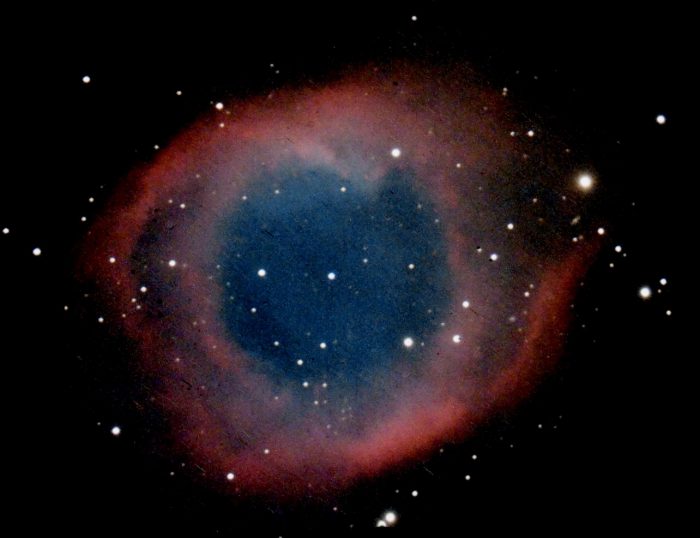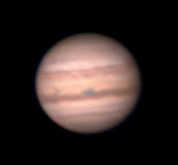This is NGC 7293, the Helix Nebula.

The Helix Nebula was not discovered until 1824. I suspect this was largely due to its southerly location, which makes it a rather difficult object to see. It never gets very high in North Carolina’s night sky, and many of the early astronomers, like Charles Messier, lived much further north, making this deep-space object (DSO) even lower in the night skies. Another contributing factor is the Helix Nebula is large and fairly bright, but it has a very low surface brightness, making it hard to see without the aid of a camera.
The Helix Nebula has a visual magnitude of +7.59. It’s about 790 light years away from us.
The Helix Nebula happens to be one of my favorite DSO’s. Unfortunately, this year, I have had a very hard time getting a decent image of it due to a huge increase in the amount of light pollution on the southern side of my observatory.
What to look for in October’s Night Skies.
Mercury, Venus and Spica will form an interesting triangle near the western horizon right after sundown on October 1. The triangle will elongate as the month goes by. Spica will seem to race to catch up to the setting Sun while Mercury and Venus lag behind. By October 10 or 11, you won’t be able to see Spica, at all but Mercury and Venus will continue to rule the evening skies for the rest of October.
You can see Jupiter and Saturn shortly after sunset. Simply look due south and you will see two fairly bright objects in the night sky. Jupiter, the brighter of the two, will appear in the WSW. Saturn will be almost due south. Pluto, the dwarf planet, is a little East of Saturn. With a good pair of binoculars, you show be able to see the Galilean moons of Jupiter and the rings of Saturn. If we get some very calm and clear nights, it might be a good time to try and get photographs of the two gas giants.

Neptune will be further east of Saturn than Pluto. With a visual magnitude of +7.8, you cannot see it with the naked eye. Uranus rises at 7:53 at 9:53 p.m. Under very good observing conditions, you might be able to see it with your naked eye. Both planets are fairly dim and best viewed through a telescope or binoculars.
Starting around October 16, you might be able to see Mars just before sunrise.
Venus and Mercury both rise after the sun and will not be visible in the morning skies during October.
There are two meteor showers in October. The Draconids peak on October 8 and the Orionids peak on the 21st.
The Draconids appear to emanate from the constellation Draco. One of the best things about the Draconids is they can be viewed in the evening. They will appear almost directly overhead once the skies get dark on October 8.
The Orionids will likely offer more action than the Draconids. You can expect to see about 20 shooting stars per hour. There’s also a good possibility of a fireball or two. As the name implies, the meteors appear to originate from the constellation Orion. Best viewing is at 5:00 AM. The center of activity will be about 30 degrees south of the zenith.
Moon Phases:
1st Quarter is October 5
Full Moon is October 13
Last Quarter is October 21
New Moon is October 27



